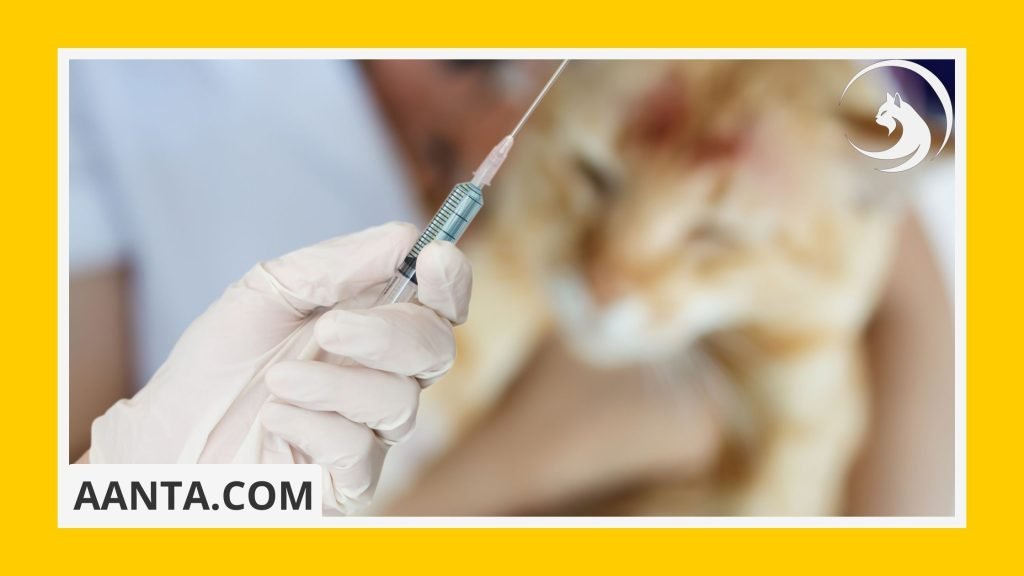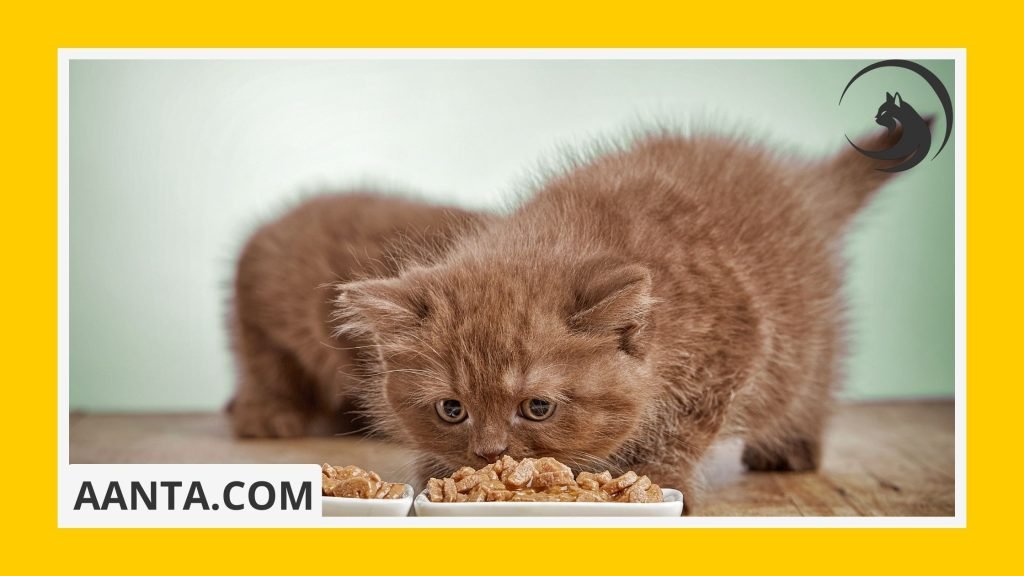Kitten Health is paramount, making it imperative to cultivate a happy and thriving environment for your feline companion. Thankfully, achieving this is simpler than one might imagine. By integrating these straightforward measures into your cat’s daily regimen, you guarantee their well-being and satisfaction.
Los Angeles-based veterinarian Dr. Jeff Werber, a devoted caretaker of eight charming cats, shares invaluable insights to assist fellow cat owners in nurturing their pets for a fulfilling life. Establishing a solid foundation in feline care is essential in crafting a nurturing and joyful atmosphere for your cherished companion.
Cat Care Essentials: Grooming & Health Checks

Cats are renowned for their self-grooming prowess, facilitated by their rough tongues. Nonetheless, regular grooming is essential for their well-being. Cats benefit immensely from routine brushing, ear cleaning, dental care, and nail trimming, all integral aspects of responsible pet ownership. Let’s delve into how we can enhance the care of our beloved felines, ensuring they both look and feel their best.
Grooming plays a pivotal role:
- It facilitates the detection of skin infections, parasites, and abnormal growths.
- Removes loose fur and debris.
- Fosters a positive bond between you and your cat.
- Reduces the risk of hairballs and digestive issues associated with ingested fur.
Teaching your cat to embrace grooming:
Start grooming your cat gently and calmly from an early age to cultivate a positive association. Begin when your cat is relaxed and gradually introduce tools like a soft toothbrush for dental care. Employ short strokes while brushing, following the direction of the fur. Offer treats and praise to reward cooperation. Pay attention to your cat’s body language and cease grooming if signs of stress or discomfort arise.
Selecting the right grooming tools:
Opt for brushes or combs with gentle bristles that won’t harm your cat’s skin. Short-haired cats may prefer grooming gloves, while long-haired counterparts might favor plastic or bristle brushes. Rubber-bristled massaging brushes can aid in managing shedding. For older or arthritic cats, soft-bristled brushes offer comfort during grooming sessions.
Remember, a few minutes of daily grooming is preferable to prolonged sessions, ensuring your cat’s comfort and cooperation. Always consult your vet for advice on grooming techniques and tools tailored to your cat’s specific needs.
Pet Insurance: Essential for Cats

Investing in cat insurance is a wise decision aimed at safeguarding yourself against unexpected and potentially costly veterinary bills. By having insurance coverage for your feline friend, you can ensure that they receive the necessary medical care without putting a strain on your finances.
Pet Healthcare Packages: Managing Expenses Effectively
In addition to cat insurance, pet healthcare packages offer another avenue to manage veterinary expenses efficiently. These packages often include a range of preventive care services, such as vaccinations, routine check-ups, and parasite control treatments. By opting for a comprehensive healthcare package, you can provide your cat with essential preventive care while keeping your veterinary costs predictable and manageable.
Veterinary Establishments Offering Pet Healthcare Services
Several reputable veterinary establishments provide cat insurance and pet healthcare packages. Some of these include:
- Medivet: With numerous clinics across the UK, Medivet offers a range of healthcare services tailored to the needs of cats and other pets.
- CVS UK Ltd: CVS UK Ltd operates a network of veterinary practices nationwide, providing comprehensive healthcare solutions for pets.
- Veterinary Groups: Various veterinary groups specialize in offering pet healthcare services, catering to the diverse needs of pet owners.
- Companion Care/Vets4Pets: Known for their commitment to preventive care, Companion Care and Vets4Pets clinics offer wellness plans designed to keep pets healthy and happy.
Finding the Right Healthcare Plan
When exploring pet healthcare options, it’s essential to consider factors such as coverage benefits, cost, and the specific needs of your cat. To find the right healthcare plan, take the following steps:
- Research Local Veterinary Establishments: Start by researching veterinary establishments in your area that offer cat insurance and pet healthcare packages. Look for reputable clinics with positive reviews and a track record of providing quality care.
- Consult with Veterinarians: Schedule consultations with veterinarians at different clinics to discuss their healthcare plans. Ask questions about coverage details, pricing, and any additional benefits included in the package.
- Evaluate Coverage Options: Compare the coverage options offered by different healthcare plans to determine which one best meets your cat’s needs.
- Consider Your Budget: Assess your budget and determine how much you can afford to spend on cat insurance or a pet healthcare package. Choose a plan that provides comprehensive coverage without stretching your finances too thin.
- Review Customer Feedback: Take the time to read customer reviews and testimonials about the veterinary establishments and healthcare plans you’re considering. Feedback from other pet owners can provide valuable insights into the quality of care and service provided.
With these steps and conducting thorough research, you can find the right cat insurance or pet healthcare package to ensure your feline companion receives the best possible care while providing you with peace of mind.
Vaccinate & Microchip Your Cat

Vaccines play a crucial role in preventing various diseases and are an integral component of preventative care for cats. By vaccinating your cat, you contribute significantly to ensuring its overall well-being and longevity. These vaccinations provide vital protection against highly contagious diseases such as tuberculosis, parvovirus, and respiratory infections, among others.
Why Vaccinate Your Cat?
- Preventing Life-Threatening Diseases: Diseases like plague, hepatitis, parvovirus, and cat flu often lack complete cures, making prevention through vaccination imperative. It’s the most reliable method to shield your cat from potentially fatal illnesses.
- Stimulating Immune Response: Vaccines work by introducing modified infectious agents into your cat’s bloodstream. This process stimulates the immune system, enabling the body to recognize and combat diseases without causing illness.
Understanding Pet Vaccines
Cat vaccines fall into two categories: core and non-core vaccines. Core vaccines are vital for all cats, whereas non-core vaccines may be suggested depending on individual risk factors and potential exposure to specific diseases.
The Significance of Microchips
Microchips serve as a valuable tool for pet identification and retrieval. These small chips, about the size of a grain of rice, are implanted under your cat’s skin. Each microchip contains a unique identification code, typically comprising letters and numbers or a string of 15-digit numbers. Contrary to popular belief, microchips do not include GPS technology.
By prioritizing cat vaccinations and microchip implantation, pet owners can take proactive steps to safeguard their feline companions’ health and security.
Identify Your Cat’s Breed

Whether you acquire your cat from a breeder or rescue them from a shelter, identifying their breed can be a delightful mystery. While purebred cats come with documented lineage, mixed-breed cats offer a unique blend of traits, making breed determination more challenging. However, with keen observation and knowledge of typical breed characteristics, you can unravel the mystery without genetic testing. Here’s how:
1. Coat Color, Pattern, and Length Cat breeds often exhibit distinctive coat patterns and colors that reflect their lineage. While some colors like orange and black are not exclusive to particular breeds, certain patterns are characteristic of specific breeds. For example:
- Siamese cats are renowned for their pointed pattern.
- Bengals are distinguished by their striking rosette spots.
- Tabby cats commonly display the “M” shape on their forehead.
2. Head Shape and Physical Traits The shape of your cat’s head and specific physical characteristics can offer valuable clues about their breed:
- Scottish Folds and American Bulldogs feature distinctive folded or curled ears.
- Maine Coons, Ragdolls, and Norwegian Forest Cats may have tufted ears. Observing general physical traits such as body size, facial features, and ear shape can aid in breed identification. For instance:
- A slim build, angular face, and dark spots may indicate a Siamese breed.
- Large body, long hair, and prominent ear tufts are characteristic of Maine Coons.
3. Size and Body Type Your cat’s size and body proportions can also provide insights into their breed:
- While the average cat weighs around 11 pounds, certain breeds like Maine Coons can reach 20 pounds or more.
- Slender, agile cats may suggest breeds like the Siamese, while larger, more robust body types are reminiscent of Norwegian Forest cats.
By paying attention to these distinctive features and comparing them to known breed characteristics, you can embark on an exciting journey to uncover your cat’s lineage. Whether they boast a pedigreed heritage or embody a captivating mix of traits, understanding your cat’s breed adds to the richness of your bond with your furry companion. Don’t miss out on the opportunity to explore and celebrate their unique identity!
Neutering: Vital for Cat Health

Spaying, also known as neutering or “sparing” your cat, is a surgical intervention conducted by a qualified veterinarian to remove the testicles of male cats.
How is Spaying Performed?
1. Surgical Incision:
- The veterinarian begins by making a small incision in the scrotum of the cat.
2. Testicle Removal:
- Through this incision, the vet carefully removes the testicles.
3. Wound Closure:
- Typically, the incision is small and heals well on its own without the need for skin stitches.
- Skin stitches are generally unnecessary unless further exploration for retained testicles in the abdomen is required. However, it’s essential to note that occurrences of retained testicles in cats are exceedingly rare.
4. Scrotumectomy in Special Cases:
- In instances of trauma, infection, or cancer affecting the scrotum or testicles, the veterinarian may perform a scrotumectomy.
- A scrotumectomy involves the complete removal of both the scrotum and testicles to address underlying health concerns.
Spaying is a routine surgical procedure that offers numerous benefits, including population control and prevention of certain health issues in male cats. While the procedure involves minor surgery, it is typically safe and well-tolerated by cats. If you have any concerns or questions regarding spaying or your cat’s health, consulting with a qualified veterinarian is recommended for personalized guidance and care.
CONCLUSION
Ensuring your cat’s well-being requires consistent care and regular health check-ups, which are essential for its overall happiness and health. Although cats possess natural self-cleaning abilities, they greatly benefit from additional grooming routines such as dental care, ear cleaning, tooth brushing, and nail trimming. These practices not only maintain their physical appearance but also aid in the early detection of underlying health concerns, thereby strengthening the bond between you and your feline companion.
Furthermore, vaccinations and microchipping play a crucial role in safeguarding your cat against diseases, and its safety. Understanding your cat’s breed can offer valuable insights into its behavior and specific requirements, enabling personalized care. Proper feline nutrition is fundamental for a healthy cat, as it can prevent issues like excessive drooling, certain types of cancer, and behavioral problems. By integrating these elements into your cat care regimen, you can contribute to the well-being of your beloved pet, promoting a joyful and thriving feline friend.
FAQs
1. Why is grooming important for cats?
- Regular grooming helps detect skin infections, parasites, and abnormal growths, removes loose fur and debris, fosters a positive bond between you and your cat, and reduces the risk of hairballs and digestive issues.
2. How can I teach my cat to enjoy grooming?
- Start grooming your cat gently from an early age, use calming techniques, introduce grooming tools gradually, offer treats and praise for cooperation, and pay attention to your cat’s body language.
3. What grooming tools are recommended for cats?
- Opt for brushes or combs with gentle bristles, consider grooming gloves for short-haired cats and plastic or bristle brushes for long-haired cats, and use rubber-bristled massaging brushes for managing shedding.
4. Why is pet insurance essential for cats?
- Pet insurance helps safeguard against unexpected veterinary bills, ensuring your cat receives necessary medical care without financial strain.
5. What are pet healthcare packages, and how do they help manage expenses?
- Pet healthcare packages offer preventive care services such as vaccinations, routine check-ups, and parasite control treatments, helping manage veterinary costs effectively.
6. What factors should I consider when choosing a healthcare plan for my cat?
- Consider coverage benefits, cost, specific needs of your cat, reputation of veterinary establishments, and customer feedback when selecting a healthcare plan.
7. Why are vaccinations important for cats?
- Vaccinations prevent life-threatening diseases, stimulate the immune response, and protect cats from highly contagious illnesses.
8. What are core and non-core vaccines for cats?
- Core vaccines are essential for all cats, while non-core vaccines may be recommended based on individual risk factors and exposure to specific diseases.
9. How do microchips benefit cats?
- Microchips aid in pet identification and retrieval, containing a unique identification code to ensure the security and well-being of cats.
10. Why is neutering important for male cats?
- Neutering helps control the cat population, prevents certain health issues, and is a routine surgical procedure that is safe and well-tolerated by cats.







